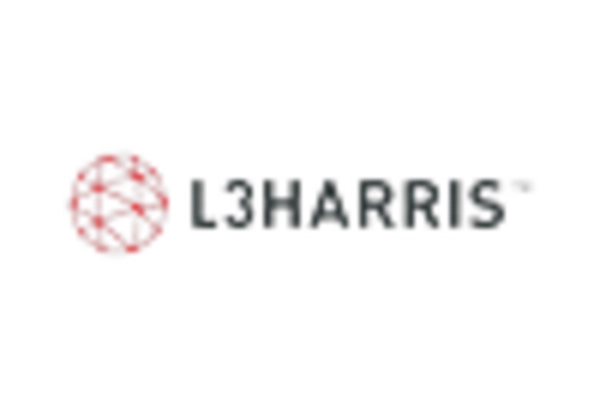The Remote Sensing Technology Market is characterized by rapid advancements and a diverse array of applications across various sectors, including agriculture, forestry, environmental monitoring, urban planning, and disaster management. Competition in this market is driven by the growing demand for high-resolution imagery, GIS (Geographic Information Systems) data, and the need for real-time data analytics. Companies in this space are striving to leverage cutting-edge technologies such as satellite imagery, aerial surveys, and ground-based systems to enhance their product offerings.
As the market continues to expand, companies are also focusing on partnerships, collaborations, and innovative service delivery to gain a competitive edge and cater to the specific needs of their clients. Key players are deploying strategies like enhancing their technology portfolios and expanding their geographic footprints to tap into emerging markets.
Esri has established a strong presence in the Remote Sensing Technology Market by specializing in GIS software and geospatial analysis tools. Known for its powerful ArcGIS platform, Esri empowers users to analyze, visualize, and interpret spatial data seamlessly. The company's strengths lie in its extensive experience, robust software capabilities, and vast user community, which contribute to ongoing innovation and user support. Esri invests significantly in research and development, continually enhancing its offerings to stay ahead of competitors.
The company boasts a wide range of partnerships and collaborations with academic institutions, government agencies, and private enterprises, allowing it to leverage a diverse set of expertise and resources that enhance its market impact. As organizations increasingly recognize the value of spatial data, Esri's solutions are becoming integral to various decision-making processes in different sectors worldwide.
NASA also plays a crucial role in the Remote Sensing Technology Market through its pioneering advancements in satellite-based remote sensing technologies. With a focus on Earth observation, NASA provides critical data and insights that support scientific research, public policy, and disaster response. Key products and services include the Landsat program, which offers long-term, high-resolution satellite imagery and various Earth science missions that monitor climate change, land use, and natural resources. NASA's strengths stem from its cutting-edge research capabilities, extensive experience in space technology, and partnerships with government and commercial entities that foster innovation.
The agency's active engagement in mergers and acquisitions, particularly with private satellite companies, has strengthened its capacity to enhance data analysis and broaden customer access to valuable information. This collaboration not only expands NASA's technological capabilities but also helps foster a thriving ecosystem that supports the broader adoption of remote sensing technologies across various global markets.


















Leave a Comment